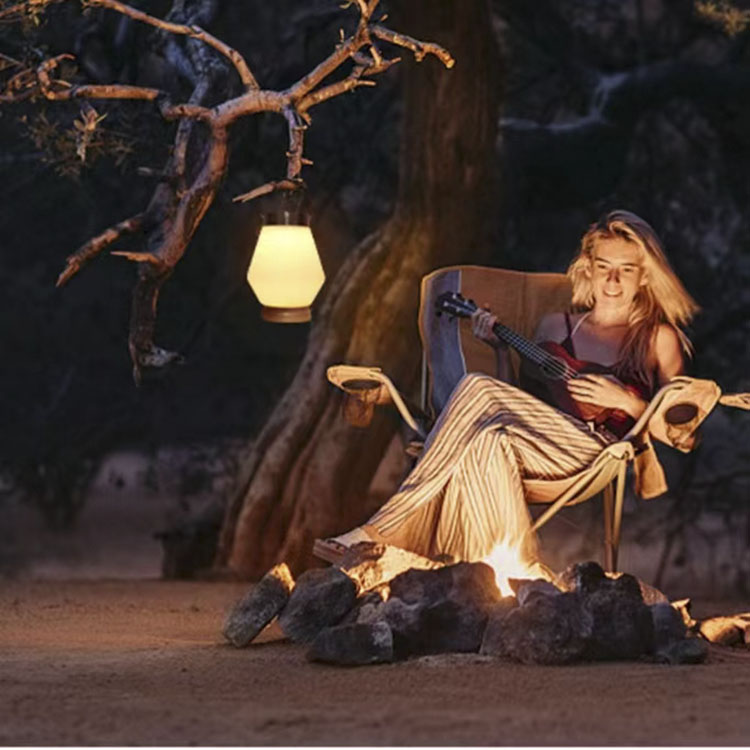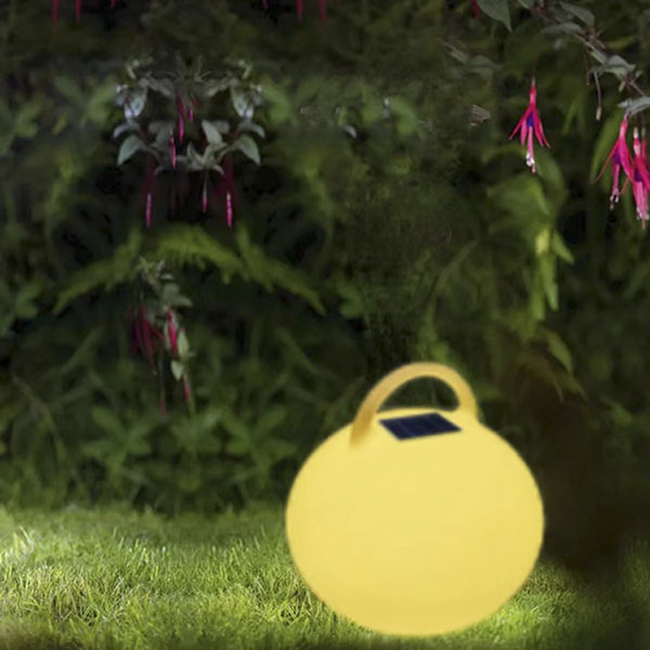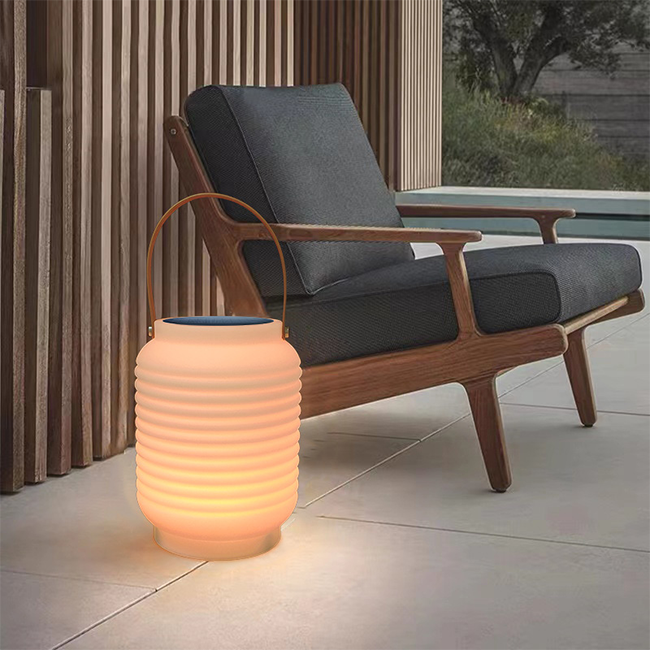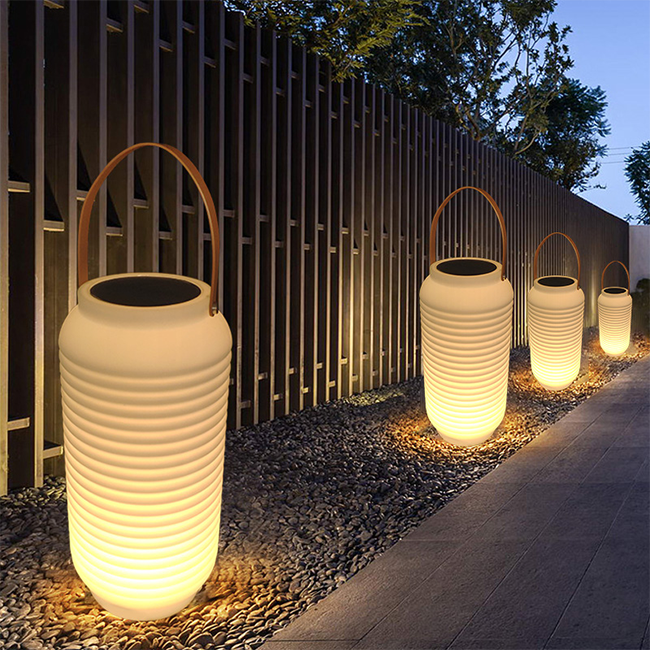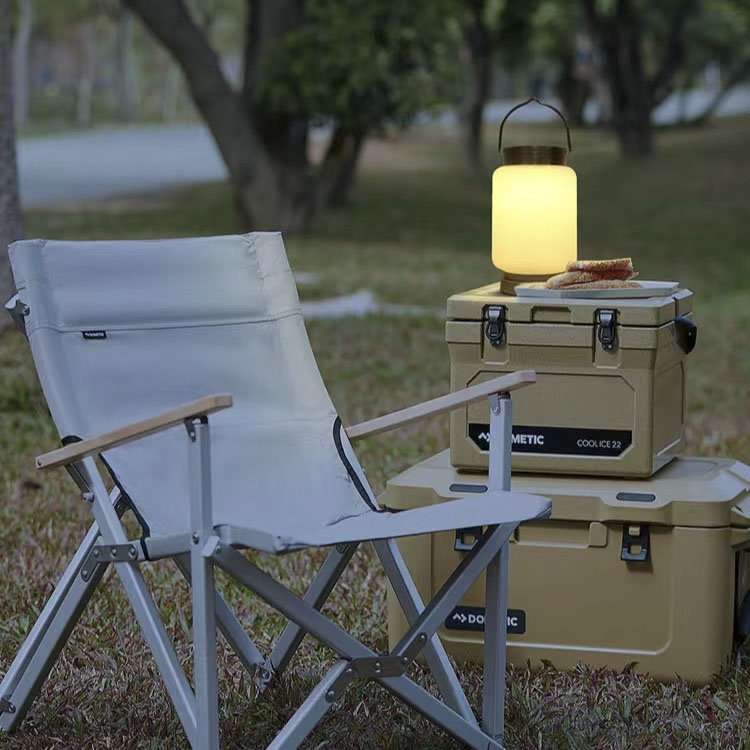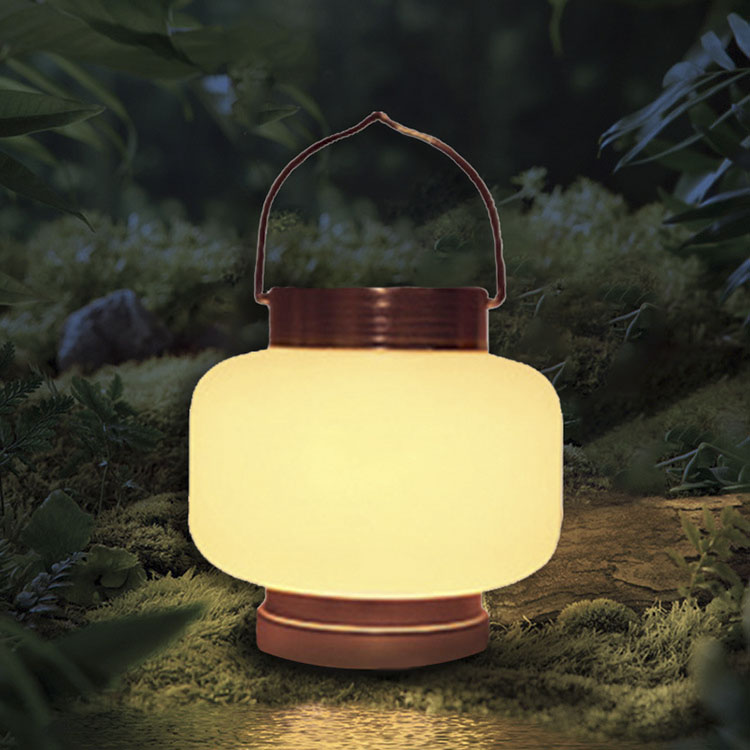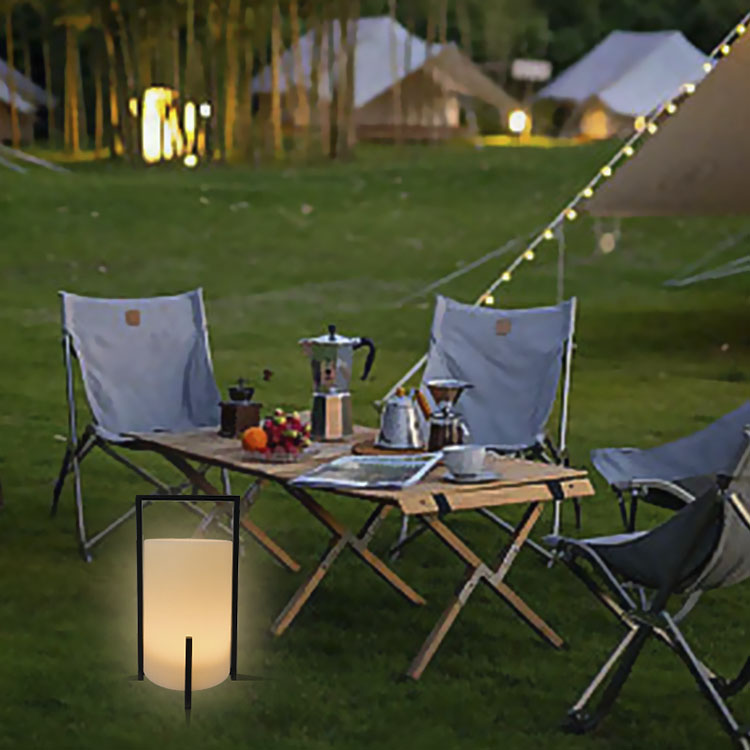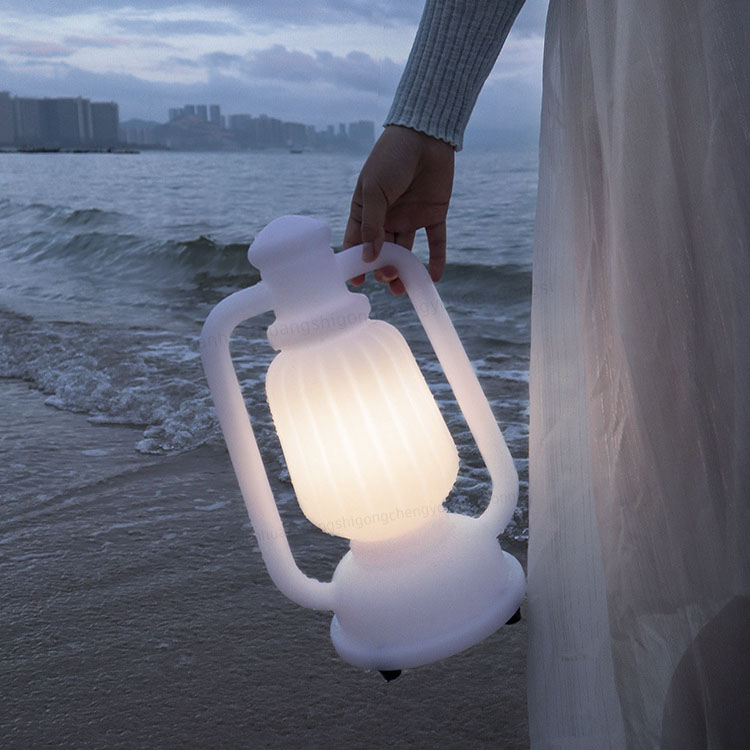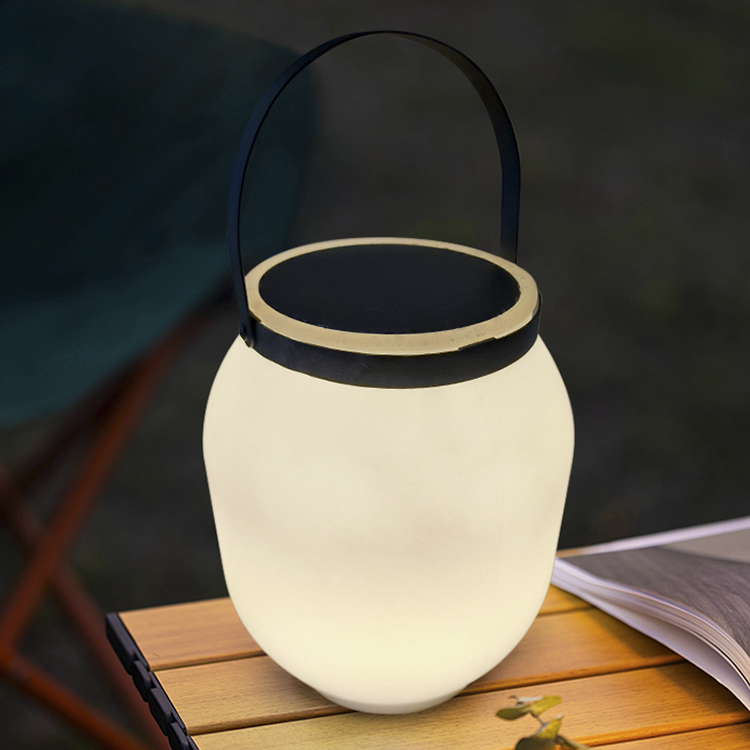I. Introduction
Lighting is a crucial factor when camping out. Whether it's outdoor exploration or setting up campsites, high-quality lighting equipment can provide sufficient brightness and reliable light sources.
II. Factors in Choosing Portable Outdoor Lights
2.1 Brightness and lighting distance
Brightness and lighting distance are one of the primary factors that users consider when choosing outdoor lights. Higher brightness and longer lighting distances mean that lamps can provide better lighting effects, allowing users to have a good view in outdoor environments.
Huajun Lighting Factory has been producing and developing outdoor lighting fixtures for 17 years. The brightness of Outdoor Portable Lights is around 3000K, and the lighting distance can reach 10-15 square meters. Very suitable for outdoor camping use.
2.2 Energy type: comparison between charging and battery
Rechargeable lamps can be charged through chargers or solar panels, while battery lamps require battery replacement. Users need to choose the appropriate energy type based on their own needs and usage conditions.
The Portable Solar Lights Outdoor produced by Huajun Factory can be charged using both USB and solar panels, and each portable light comes with a battery.
2.3 Durability and waterproof performance
Outdoor environments are often unpredictable, so lighting fixtures need to be able to withstand the effects of harsh weather and adverse environments. Outdoor lights with superior durability and waterproof performance can ensure long-term reliable use of lamps.
The garden decorative lamps produced by Huajun Lighting Factory are very popular on the market in terms of durability and waterproofing. Our product features the use of imported plastic polyethylene from Thailand as raw material, and the shell is made through rotational molding process, with a waterproof performance of IP65. At the same time, the lamp body shell made of this material can have a service life of 15-20 years, is waterproof, fireproof, UV resistant, durable, and not easily discolored.
2.4 Weight and portability
Weight and portability are also key factors that users are concerned about. In outdoor activities, carrying convenient and lightweight lighting fixtures can increase user convenience and comfort.
Our factory's portable portable portable lights weigh less than 2KG and are found to be convenient to carry.
2.5Adjustable angle and lamp positioning
During outdoor activities, it may be necessary to position the lights in a specific direction, such as illuminating distant roads or illuminating the interior of tents. Therefore, a lamp with adjustable angle or free rotation design will be more popular.
We provide camping lights that can be hung to meet specific lighting needs.
Resources | Quick Screen Your Portable Outdoor Lights Need
III. Common types of portable outdoor lights
3.1 Handheld flashlight
3.1.1 Structure and characteristics
A handheld flashlight usually consists of a shell, battery, light source, and switch. The shell is generally made of wear-resistant and waterproof materials to ensure durability and waterproof performance. Batteries are usually replaceable alkaline or rechargeable. The light source of the flashlight adopts LED or xenon bulbs, which have the advantages of high brightness and energy conservation.
3.1.2 Applicable scenarios
Flashlights are suitable for various indoor and outdoor lighting needs, especially in dark or night activities. For example, handheld flashlights can be used in camping, hiking, outdoor adventures, home emergencies, and other scenarios.
3.2 Headlights
3.2.1 Structure and characteristics
It is often composed of a headband with lighting components and a battery. Headlights usually use LED light sources, which have high brightness and ultra long battery life. The design of the headlights allows users to keep the direction of light illumination consistent with the direction of head movement, making outdoor activities more convenient for users.
3.2.2 Applicable scenarios
Headlamps are suitable for outdoor activities that require manual operation, such as night hiking, camping, fishing, night car repairs, etc. The lighting direction of the headlights changes with the movement of the head, allowing users to freely complete tasks with both hands without being limited by lighting.
3.3 Campsite Lights
3.3.1 Structure and characteristics
The shell of the camp light is made of waterproof material to meet the challenges of outdoor environments. The light source of the camp lamp is designed to emit 360 degrees of light, providing a uniform lighting effect.
3.3.2 Applicable scenarios
Suitable for camping, wilderness exploration, outdoor gatherings and other scenarios, providing sufficient lighting for the entire campsite. The bracket design of the camp light allows it to be placed on the ground or hung inside the tent, increasing the flexibility of use.
Resources | Quick Screen Your Portable Outdoor Lights Need
VI. Guidelines for Choosing Portable Outdoor Lights
4.1 Safety
Firstly, ensure that the lamp has effective waterproof performance to cope with possible rainwater or humid environments. Secondly, the shell of the lamp should have durability and be able to prevent damage caused by accidental collisions or falls. In addition, the battery compartment of the lamp should be designed to be tight and reliable to prevent safety issues caused by accidental loosening of the battery during movement. Finally, choose lighting fixtures with overcharging and over discharge protection functions to ensure the safe use of the battery.
4.2 Selecting Brightness Based on Activity Needs
Some activities require higher brightness, such as night hiking, camping, or night fishing, while others require lower brightness, such as reading or watching the starry sky. Generally speaking, lamps with multiple levels of brightness adjustment are more flexible and can adjust brightness according to different situations to meet various activity needs.
4.3 Selecting Lamp Types Based on Activity Types
For example, a handheld flashlight is suitable for activities that require holding and shining in a specific direction, such as exploration or night walking. Headlamps are suitable for activities that require both hands to operate or require the light source to be aligned with the direction of head movement, such as hiking or camping at night. Camp lights are suitable for activities that require sufficient lighting for the entire camp, such as camping or family gatherings.
4.4 Balance of weight and portability
Lighter lighting fixtures are easier to carry and control, especially in outdoor activities that require long-term carrying. However, overly lightweight lighting fixtures may sacrifice brightness and long-lasting performance, so it is necessary to find an appropriate balance point
V. Best practices and practical recommendations
5.1 Avoid excessive use of lighting
Optimizing energy utilization in outdoor camping, excessive use of lighting not only wastes energy but may also interfere with other campers. In order to optimize energy utilization and reduce environmental impact, we should make reasonable use of lighting.
5.2 Regular inspection and maintenance of lighting fixtures
Before each camping trip, check the condition of the lighting fixtures, confirm if the batteries are sufficient, and clean the surface of the lighting fixtures of dust and dirt. At the same time, replace vulnerable parts such as batteries and bulbs in a timely manner to maintain the normal brightness and performance of the lighting fixtures.
5.3 Equipped with backup batteries or charging equipment
To ensure continuous power supply, backup batteries or charging devices should be equipped. When selecting a backup battery, its capacity and charging method should be considered to meet the energy requirements of the lamp.
Related Reading
Illuminate your beautiful outdoor space with our premium quality garden lights!
Post time: Aug-24-2023

